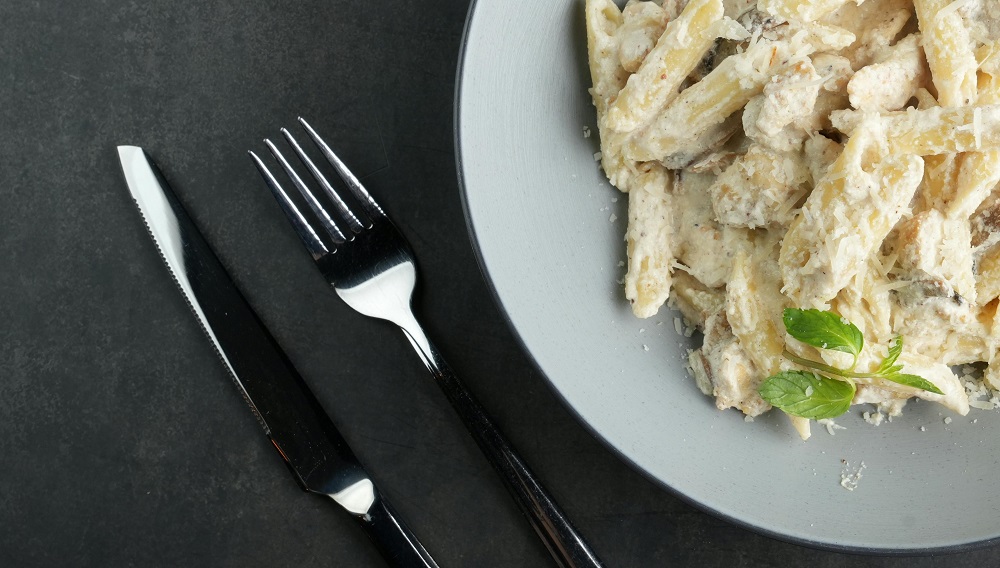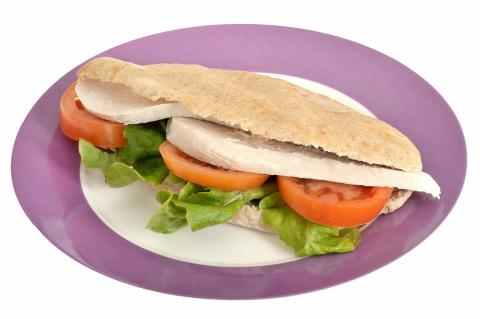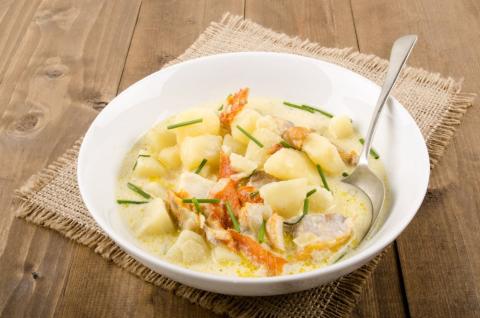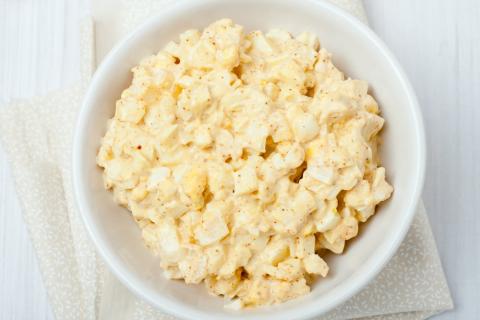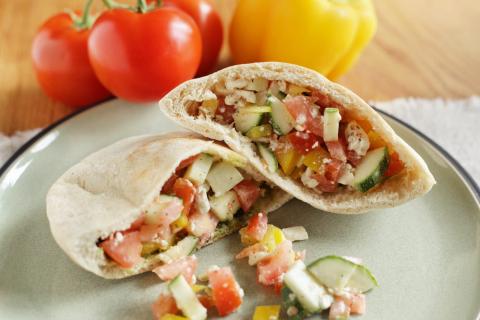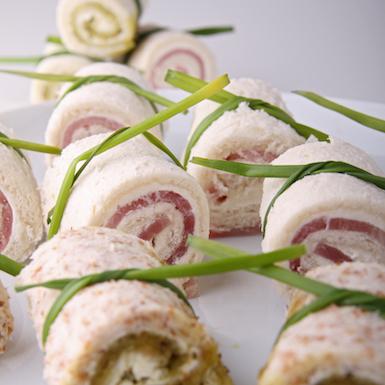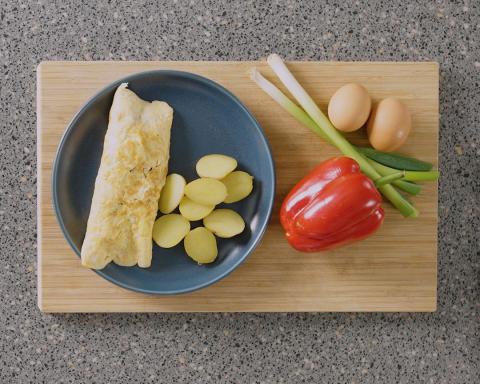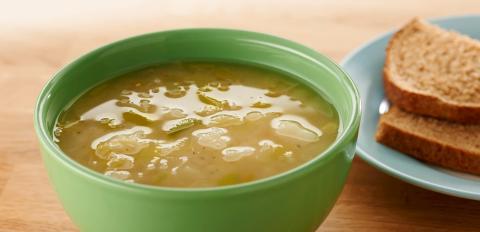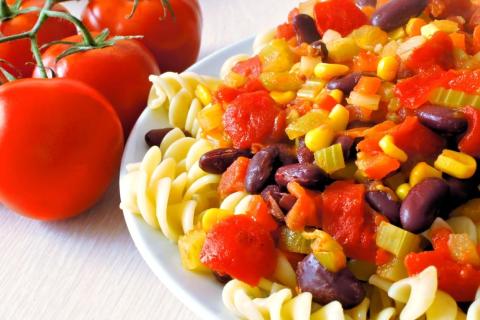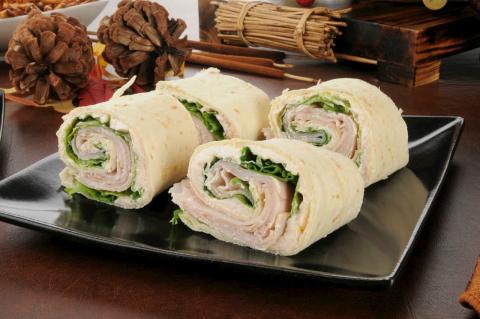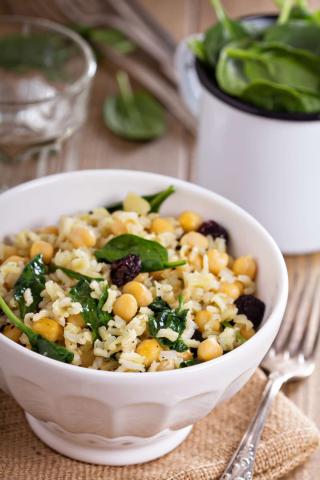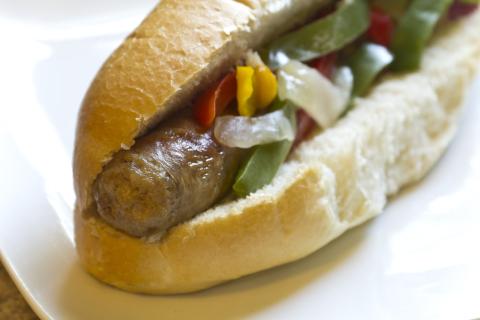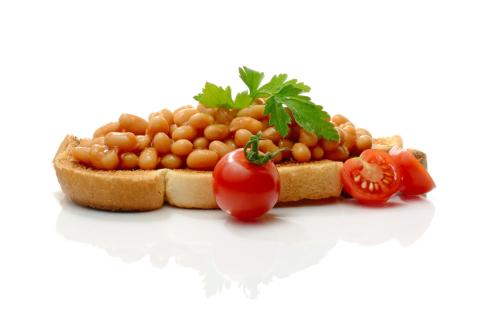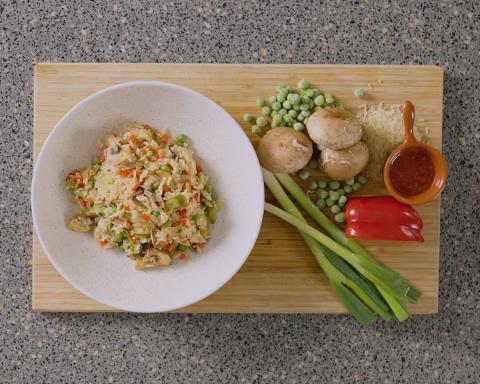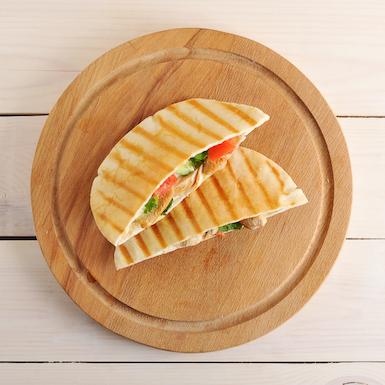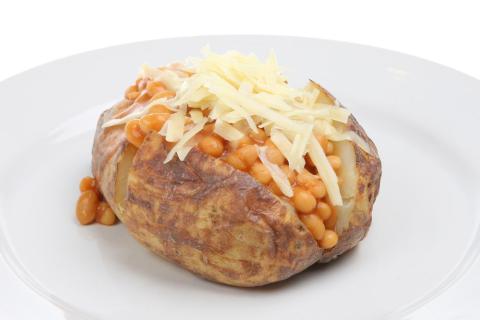- (350g) Dried Pasta
- 11 Tablespoons (330g) Frozen Green Peas
- 2 Smoked Packs (220g) Trout Fillets
- 1 Pinch (1g) Ground Black Pepper
- 6 Tablespoons (240g) 0% Fat Greek Yoghurt
- 4 Teaspoons (20g) Horseradish Sauce
Ingredients
Allergy Disclaimer
Always check the label of each ingredient for allergy warnings.
Method
- Cook the pasta in a large pan of boiling water according to the instructions on the packet
- Add the peas to the pan of pasta for the last 3 minutes of cooking
- While the pasta is cooking, break up the trout into flakes and set aside
- Mix the yogurt with the horseradish and black pepper
- Drain the pasta and peas and return to the pan
- Stir in the trout and yogurt mix and let the heat of the pasta warm the sauce - this takes less than a minute
- Enjoy hot!
Time Saver Tips
Buy ready to eat smoked trout flakes
Tips for Kids
Choose their favourite pasta shapes. Get them involved in mixing the sauce ingredients together. Horseradish sauce has quite a strong taste, so start off with a small amount in case they don't like it.
Nutritional Information
Based on a single serving of 397g (% of an adult's reference intake)
Energy
479 kcals ( 24 %)
2,023 kJ ( 24 %)
Fat
1.2 g ( 6 %)
Saturates
71.7 g ( %)
Sugar
10.9 g ( 12 %)
Salt
0.4 g ( 6 %)
Detailed nutritional information
| Per 100g | Per 397g serving | |
|---|---|---|
| Energy Kcals | 121 | 479 |
| Energy Kj | 515 | 2,023 |
| Protein | 7.9 g | 31.2 g |
| Total Fat | g | g |
| Saturated Fat | 0.3 g | 1.2 g |
| Carbohydrates | 18.1 g | 71.7 g |
| Total Sugars | 2.8 g | 10.9 g |
| NSP Fibre | 2.2 g | 8.7 g |
| Sodium | 63 mg | 152 mg |
| Salt | 0.1 g | 0.4 g |
Find out about nutritional labelling
Nutrition labels on the front of packaging
- Most of the big supermarkets and many food manufacturers display nutritional information on the front of pre-packed food.
- Front of pack nutrition labels provide information on the number of grams of fat, saturated fat, sugars and salt and the amount of energy (in kJ and kcal) in a serving or portion of a recipe.
- The labels also include information about reference intakes (expressed as a percentage) which are guidelines about the approximate amount of particular nutrients and energy required for a healthy diet.
- The colour coding tells you at a glance if the food has high (red), medium (amber) or low (green) amounts of fat, saturated fat, sugars and salt.
- The more greens on the label, the healthier the choice
- Amber means neither high nor low, so you can eat foods with all or mostly ambers on the label most of the time.
- Reds on the label means the food is high in that nutrient and these are the foods we should cut down on. Try to eat these foods less often and in small amounts.
Food shopping tips
If you’re trying to decide which product to choose, check to see if there's a nutrition label on the front of the pack. This will help you to quickly assess how your choices stack up. You will often find a mixture of red, amber and green colour coding for the nutrients. So when you're choosing between similar products, try to go for more greens and ambers and fewer reds if you want to make a healthier choice.
 Activities & Play
Activities & Play Behaviour
Behaviour Childcare
Childcare Development & Growing Up
Development & Growing Up Family, Friends & Relationships
Family, Friends & Relationships Feeding Your Baby
Feeding Your Baby Food & Eating
Food & Eating Health & Safety
Health & Safety Mental Health & Wellbeing
Mental Health & Wellbeing Money & Work
Money & Work Online Behaviour & Safety
Online Behaviour & Safety Pregnancy & First Days
Pregnancy & First Days School & Education
School & Education Sleep
Sleep

